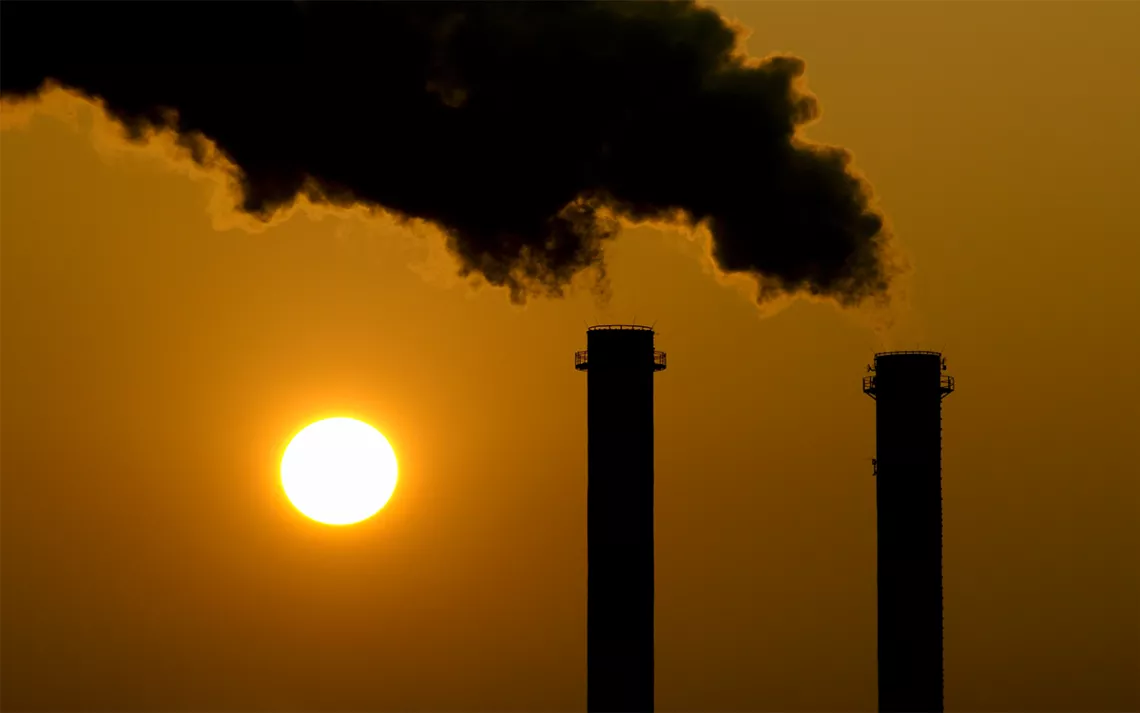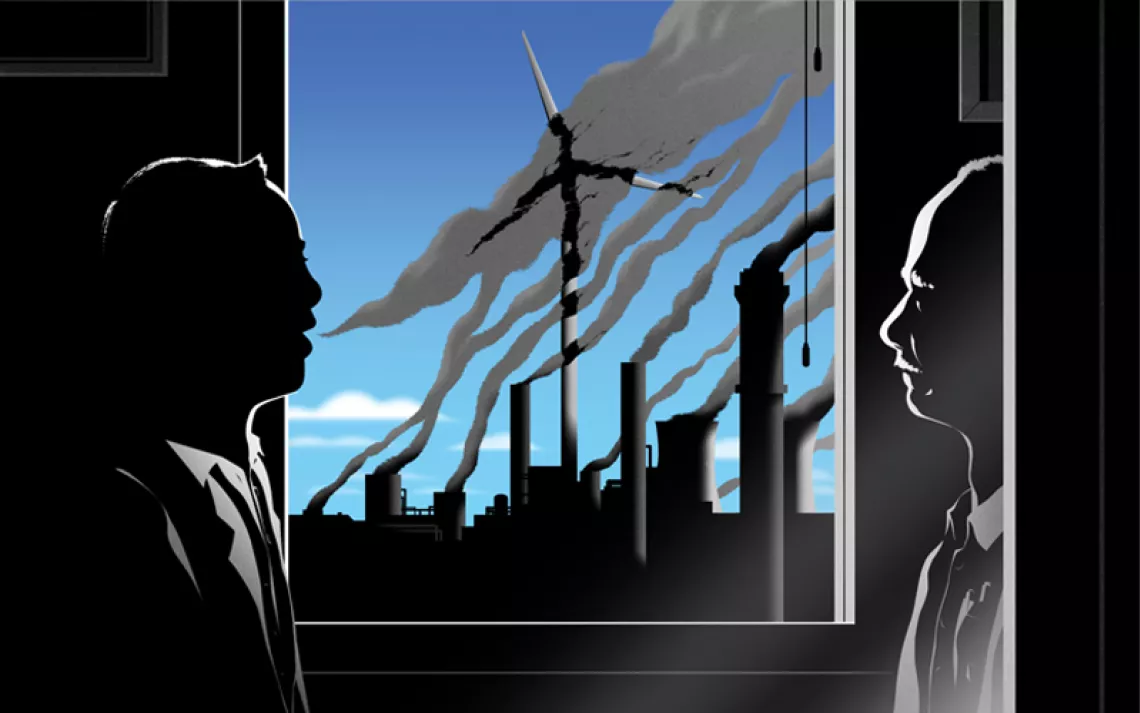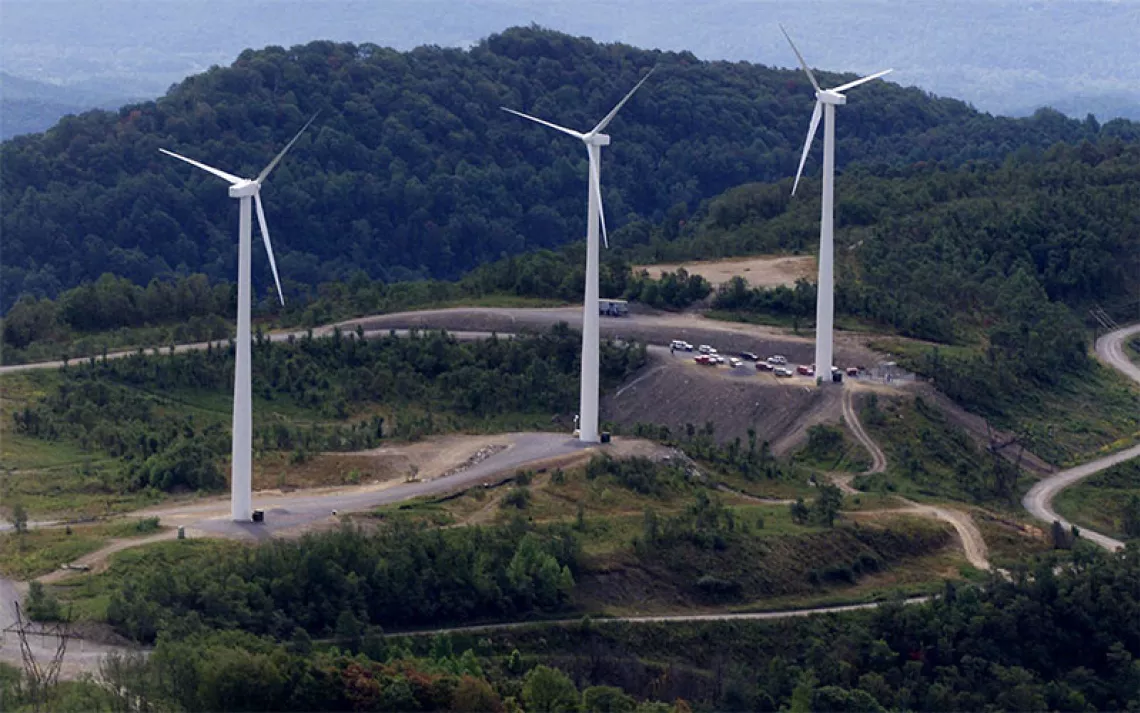Can Trump Really Repeal the Clean Power Plan?
Hint: Remember what happened to his last effort to “repeal and replace”

Photo by panemoj/iStock
Speaking before—who else?—an audience of coal miners in Hazard, Kentucky, this morning, EPA administrator Scott Pruitt announced that the Trump administration is going to attempt to “roll back” the Clean Power Plan. “The war on coal is over,” Pruitt declared in renouncing the Obama-era regulation that required states to reduce carbon emissions from (primarily) coal-fired power plants. Those plants were, until very recently, the nation's largest source of greenhouse gases, and regulating them was the Obama administration’s primary way of meeting the United States’s obligations under the Paris climate agreement—from which Trump has also vowed to withdraw.
But neither the EPA nor President Donald Trump can repeal the Clean Power Plan by fiat, however much they might like to pretend that they can. Here’s how the New York Times describes the president’s thinking on the issue:
President Trump has vowed since the campaign to “get rid” of the Obama-era environmental regulations. He has called the Clean Power Plan “stupid” and “job killing,” and in an executive order issued in March he directed Scott Pruitt, the EPA administrator, to dismantle the rules. Last month, Mr. Trump appeared to claim he had already done so, telling a crowd in Alabama, “Did you see what I did to that? Boom, gone.”
Not so fast. The only way Trump can repeal a federal rule like the Clean Power Plan is to undertake an entirely new rulemaking process. In a document leaked earlier this month, the EPA said that it would solicit industry and public input for “developing a rule similarly intended to reduce CO2 emissions from existing fossil fuel electric utility generating units.” That is, EPA is inviting proposals for a rule that does the same thing as the Clean Power Plan, only in a way acceptable to the fossil fuel industry—which would be to upgrade coal-fired plants rather than replace them with clean energy.
(The situation is strikingly similar to the administration's failed promise to "repeal and replace" the Affordable Care Act with something that would do the same thing, only more cheaply and without an individual mandate. No such policy existed, but Trump and congressional Republicans had to pretend that it did to pacify their base. In their effort to replace the Clean Power Plan, Trump and Pruitt appear to be relying on both understating its health benefits and overstating its costs.)
None of this is going to happen quickly. (Readers can try to nip it in the bud by speaking up here.) Reuters noted that the new rulemaking process "could take years—meaning the replacement for CPP could be a long way off, or possibly never emerge."
Meanwhile, the Clean Power Plan is well on the way to its goal of reducing power-plant emissions by 32 percent from their 2005 levels. Power-plant emissions have fallen so much, in fact, that they are now lower than emissions from the transportation sector. Trump and Pruitt's attempt to repeal the Clean Power Plan may placate the conservative groups who have demanded its abolition, but it’s not going to bring back coal. Just days ago, Luminant announced the closing of its giant, 1,880-megawatt Monticello coal-fired power plant in East Texas—not because of the Clean Power Plan but because “it was a money loser.”
The “war on coal” is indeed over—and coal lost.
 The Magazine of The Sierra Club
The Magazine of The Sierra Club







